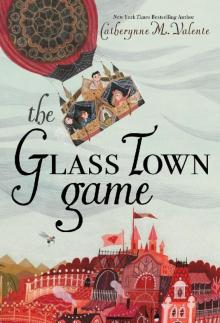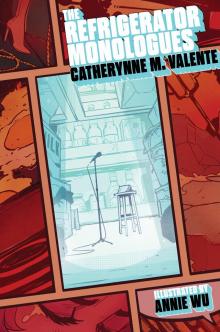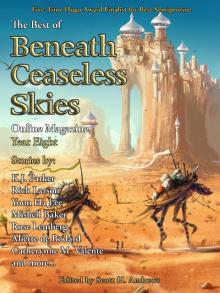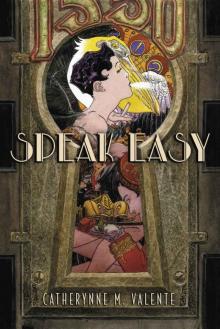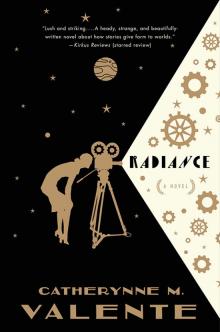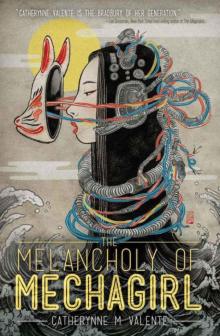


Cairo
Max Rodenbeck
Hucksters and showmen of all kinds gathered near the lakes of Azbakiyya and the Birkat al-Fil, just outside the city walls: geomancers, astrologers, shadow puppeteers, storytellers, acrobats, baton twirlers, the professional farters known as zarrat, flame spitters, stone swallowers, and the like. In 1517 Leo Africanus saw trained fleas and dancing camels at Azbakiyya. A donkey act particularly caught his fancy:
Having danced awhile, the trainer speaks to his donkey. He tells him that the sultan needs all the donkeys of Cairo to carry stones for some building project. Tumbling to the ground, the donkey raises its hoofs in the air, puffs out its belly, and shuts its eyes as if dead. The mountebank wails to his audience and asks for its help to buy another. The collection made, he continues: “Don’t believe my donkey is dead. He just wants me to buy him a treat with your money.” Then, turning to the beast, he tells him to get up. The donkey does not budge. He delivers a fine volley of blows; the animal doesn’t flinch in the slightest. So the man starts up his nonsense, saying, “Gentlemen, may it be known that the sultan has issued the following edict: Tomorrow all the people of Cairo must come out to cheer my triumphal entry. I command that all the prettiest damsels of the city should be mounted on fine donkeys fed with barley and the sweet water of the Nile.” Hardly has the showman uttered these words when the ass bounds to its feet, haughty and seemingly pleased as punch. The mountebank goes on: “True, the sheikh of my alley*10 asked that I lend my gallant steed to his wife, who is old and ugly.” At these words the donkey, apparently endowed with human intelligence, lowers its eyes and hobbles away as if he has gone lame. “So you like pretty ladies, then?” The donkey nods its head. “Well,” says the trainer, “there are plenty here! Show us who you like best.” The donkey trots around the circle of spectators. He chooses the loveliest and touches her with his muzzle. The whole crowd shouts, “Hey, Mrs. Donkey,” to tease the woman, while the mountebank rides off on his ass.
One of the earliest known theatrical productions in Arabic, a play for shadow puppets by the thirteenth-century writer Ibn Daniyal, celebrates this Cairene demimonde of entertaining con men and grifters. “Curious and Strange” (‘Ajīb and Gharīb) are the two central characters of this rollicking skit, which takes place outside Bab Zuwayla. Curious is a Tartuffe, a swindling preacher, while Strange makes a living by faking blindness and epileptic fits and by peddling bogus amulets. The unsavory pair introduce a string of other lowlife characters: a snake charmer, a Sudanese clown, a sword swallower, a self-mutilated beggar, and so on. Each one bewails his lot, but then with a snigger and a swagger reveals how he has suckered the credulous burghers of Cairo.
A roguish lot indeed, even in the midst of calamity: in 1517, after his slovenly troops had wrecked the city, the Ottoman sultan Selim the Grim was treated to an entertainment. A Cairene puppeteer reenacted for him the capture and execution of Tumanbay, the last Mameluke sultan of Cairo. Faithful to the real event at Bab Zuwayla, the puppetmaster had Tumanbay’s hanging rope snap twice before his puppet expired. Selim the Grim was pleased; he was even seen to crack a smile. The haughty Turk rewarded the entertainer with 200 dinars, and took him home to Constantinople so his son—the future Sulayman the Magnificent—could see the show.
MEDIEVAL CAIRO suffered scourges we think of as modern. Air pollution was a problem even in the eleventh century, if we are to believe Ibn Ridwan. This respected physician to the Fatimid caliph al-Mustansir said smoke from bathhouse boilers was so thick at Fustat that patients were advised to move to the suburbs. (Bathgoers, however, were spared pollution of another kind: their girl and boy bath attendants were forbidden by law from eating garlic or onions.) The good doctor recorded his complaints in a book on the bodily ills of Egypt. Today’s Cairenes would find his observations oddly apt: “In the evening, especially in the summer, a troubled, blackish vapor hangs over the city. The dust, which is irritating to the throat and dirties clothes in a single day, is particularly thick when there is no wind in the air.” And this was despite a municipal ordinance that forced shopkeepers to dampen roadways to keep the dust down (a custom that still persists).
Traffic was so bad that rules were imposed to relieve congestion. Just as today, they were habitually ignored. In accordance with a tradition ascribed to the Prophet Muhammad, streets were supposed to be wide enough to allow two fully laden camels to pass. But constant encroachment meant that police frequently had to demolish obstructions. Road users were required to pass on the left; water carriers to seal their goatskins so as not to splash. Animals with heavy loads were to be equipped with alarm bells, and combustible freight such as tinder and straw was banned from the main streets altogether. Nevertheless, Ibn Sa‘id, a poet from Granada, got stuck in a Qasaba pileup in 1241, when an oxcart loaded with stones blocked a minister’s cavalcade. “The wazir stopped, and the scurrying became intense. There were cookshops in this place, and their smoke blew into our faces and onto the robes of the minister. The passersby, I among them, nearly expired.” Away from the main thoroughfares, in the dusty back alleys where ministers—then as now—were unlikely to tread, such jams were frequent.
There were few wheeled vehicles in Cairo before 1800. Strange though it may seem, camels had rendered carriages obsolete: the humped beasts required no surfaced roads, needed fewer people to look after them, and carried comparable loads. While the highest-ranking ladies traveled in litters slung between two camels, public transport within the city was almost entirely by donkey. There were some 20,000 of them in the fourteenth century, by al-Maqrizi’s estimate. From taxi ranks at all the city gates and in the major squares, a whole day’s hire could be arranged for pennies. Most visitors praised the convenience. It was quite possible, claimed Alexander Kinglake a century and a half ago, to write a letter on the pommel of one of these ambling mounts. But six centuries before my great-grandmother, Ibn Sa‘id had a spot of trouble with the donkey business:
At Bab Zuwayla I saw more donkeys than can be found in any other country. They were for the use of going [from Cairo] to Fustat. My companion climbed on a donkey and motioned me to do the same. But I refused [until] he told me that Egyptian notables did not find this degrading; and indeed I noticed jurists, cloth merchants and distinguished persons all riding the beasts. I followed their example, but while I was just getting myself properly seated the donkeyboy signaled to the animal, who charged off, kicking up a blackish dust that blinded me and soiled my clothes. What I had feared then happened. I fell into the black swirl of dust.
Ibn Sa‘id had reason to be unhappy. The ground onto which he tumbled was likely to have been littered with refuse, for despite its antiquity, Cairo had never mastered the trick of cleaning itself.*11 Despite the daily passage of night-soil collectors, the medieval city’s streets were filthy.
The effects over time of accumulating waste need not be imagined. They can be seen in the old quarters of modern Cairo, where centuries of detritus—and the straw sprinkled on top to make roads passable after rains—has built up street levels as much as twenty-three feet in a thousand years. Passing through Bab Zuwayla today, one walks at the height where an eleventh-century camel rider would have been.
When Napoleon arrived 200 years ago he captured a city that had literally sunk into itself. Where it was not hemmed by tombs, Cairo was rimmed for most of its circumference by hundred-foot-high mountains of debris where generations of townsfolk had dumped their waste outside the walls.
Although most of these were cleared in the nineteenth century, the medieval dustheap behind the venerable Mosque of al-Azhar and beyond the old hashish market of al-Batniyya still stands. It is an impressive sight, stretching for a mile in length and rising to an astounding fifteen stories, swamping the great stone ramparts of the imperial Fatimid city. It is a monument in garbage to the endurance of Cairo. And also a testament to its medieval wealth, for as al-Maqrizi relates:
In the capital of Egypt, they say, refuse to the value of a thousand gold dinars is cast on the dung heaps every day. They re
fer to…the clay pots used by sellers of milk and yogurt, and by poor folk at food stalls. They are thinking, too…of the wicker racks used by cheesemakers, and of the paper cones used by druggists, and the string which ties the bags in which provisions like grain are sold, etc. Because, once these packages have been taken home from the markets, they are thrown away….
* * *
*1 More accurately, of the so-called Palestinian Jews, as opposed to the smaller Karaite and Iraqi Jewish sects, which had separate institutions in Cairo.
*2 Saphir published his memoirs in Hebrew in 1866. This may have alerted treasure hunters to the Geniza, but there is evidence that leakage had begun before that.
*3 The bulk of the Geniza documents ended up at Cambridge. There, in 1896, the reader in Talmudics had humored two stern Scottish sisters by agreeing to look at a manuscript they had recently purchased in Cairo. He opened their package expecting some bazaar forgery, and gasped. The document, a unique copy of the lost Hebrew text of a book from the Apocrypha, was priceless. He rushed to Cairo, where he charmed the Jewish community into allowing him to carry off all that remained of the Geniza.
*4 Mohair—made from finest goat’s hair—derives from the Arabic word mukhayyar, meaning “chosen.” Chiffon, the flimsiest silk, comes from shafāf, meaning transparent. Crimson=kirmiz; azure=azraq; blouse=Pelusium, a port city in the eastern Delta; camisole (and the French chemise)=qamīs; ream=ruzma; sash=shāsh; sequin=sikka; mattress=maṭraḥa; sofa=ṣuffa; jar=jarra; camphor=kāfūr; syrup=sharāb; sherbet=sharbāt; sugar=sukkar; candy=qandi; cinnabar=zunjufr; caraway=karawiya; carob=kharrūb, cumin=kammūn; sesame=simsim; magazine=makhzan; arsenal=dār al-ṣina‘a, meaning a house of industry; tariff=ta‘rifa; admiral=amīr al-baḥr, or lord of the sea; almanac=al-manākh; carafe=gharrāfa; elixir=al-iksīr; attar=‘itr; jasmine=yasmīn; zenith=samat; massage=masaḥa; drub=ḍaraba; mizzen=mizān, or balance; lute=al-‘ūd, the ancestor of the guitar.
*5 Precise figures for Cairo are disputed, but there is no question it outsized Mediterranean rivals. Rome at the height of its empire may have had a million inhabitants, but in A.D. 1500 its population was a mere 40,000. Paris was Europe’s greatest city in that year, with perhaps 200,000 people. Constantinople had 100,000; London half that number.
*6 The Qasaba—which evocatively means a funnel or gorge or throat—threads the northern and southern gates of Cairo. However, each section of its four-mile length has a different name: for example, the Brassmakers, the Tentmakers, the Sifters, Between the Palaces, and so on.
*7 A Venetian ducat was more or less equal in value to a gold dinar.
*8 I owe this passage to the scholarship of Jason Thompson, who has excavated unpublished work from Lane manuscripts in the British Library and the Bodleian.
*9 1 cubit=18–22 inches.
*10 The alley or ḥāra was the principal urban subdivision of Cairo until the nineteenth century. Each hāra had its own sheikh or boss in charge of keeping order, collecting taxes, and so on.
*11 Even in ancient Memphis garbage collection was ineffectual. Its streets were free of the modern scourge of plastic containers, but scraps of papyrus and broken crockery were left in roadbeds for archaeologists to find 3,000 years later.
Chapter Five
MEDIEVAL DECLINE
The first thing that astonishes a stranger to Cairo is the squalid wretchedness of the Arabs, and the external splendour of the Turks.
—R. R. Madden, Travels, 1825
LONG BEFORE Napoleon arrived to find Cairo ringed with mounds of waste, a different breed of foreign invader had knocked at the gates of the city.
In the spring of 1167 an army of Christian Crusaders rode into Egypt from Palestine. Having met little resistance from the now feeble forces of the waning Fatimid dynasty—indeed, the Egyptians had hinted at the desirability of joining the invaders in an alliance against Syria—it pitched camp outside the formidable northern walls of Cairo. In the morning an embassy comprised of two gallant knights, Sir Hugh of Caesaria and Sir Geoffrey Fulcher, dismounted their chargers in front of Bab al-Futuh, the caliphal capital’s Gate of Conquest. A silent escort of foot soldiers brought them into the city, marching them down the processional street of Bayn al-Qasrayn*1 past the buttressed minarets of the great mosque of Caliph al-Hakim and the exquisitely carved stone facade of al-Aqmar, the moonlit mosque. At length they reached the vast parade ground between the two caliphal palaces, and were admitted into the 4,000-room Eastern Palace itself.
William, the contemporary archbishop of Tyre who recorded their reception in his History of Deeds Beyond the Sea, said that the Christian soldiers’ amazement grew with every step: this, at last, was the land of milk and honey that Pope Urban II had evoked, a century earlier, to inspire his followers to holy war. The caliph’s chief wazir escorted the knights through halls guarded by Sudanese swordsmen, along mosaic paths in gardens where fountains played, through cloisters with gilded ceilings, past kitchens stocked daily by fourteen camel-loads of snow brought from Mount Sinai, and through menageries filled with parrots and giraffes and other exotic animals “such as the mind of the sleeper might conjure up in the visions of the night; such, indeed, as the regions of the East and South bring forth, but the West sees never, and scarcely ever hears of.” At last they were ushered into the throne room, where a gold- and pearl-embroidered curtain swept dramatically aside to reveal the infallible imam of the Ismaili Shi‘ites seated on a golden throne. To the horror of the court, Sir Hugh insisted on shaking hands with the eighteen-year-old caliph. Al-‘Adid, the last of the Fatimid line, proved more courteous than his courtiers: he even removed his glove for the handshake. His diplomacy paid off. The infidel embassy accepted his terms. For the paltry sum of 200,000 dinars they agreed to leave Cairo alone. The very next day the Christians marched back to Palestine with their loot.
And so the city was spared the fate of Jerusalem. When that Fatimid provincial town had fallen in 1099, the Crusaders had revolutionized Middle Eastern warfare by massacring its entire civilian population.
In the subsequent two centuries the Christians tried repeatedly for the greater prize of Egypt. They sacked its port cities of Alexandria and Damietta in 1149. They captured the town of Bilbays, just forty miles north of Cairo, in 1168, and slaughtered its inhabitants to a man. The Fatimids held them off with bribes and promises. When that didn’t work they allied first with the Christians, then with the Sunni Muslims of Syria. But in the end the Shi‘ite dynasty grew too weak to survive. Racked by schisms—they were inevitable, given the tension between an imamist ideology that held its rulers to be infallible and the fact that some caliphs were underage or incapable—the Fatimid court succumbed to bloody palace intrigue. In the prevailing insecurity army officers saw their chance and seized power. As we have seen, Saladin arrived with a force from Syria to bolster the tottering Fatimids, but instead ousted them in the year 1171. Al-‘Adid died a mysterious death in captivity. Saladin banned Shi‘ism and chased its adherents into prison or exile. He opened the palaces of al-Qahira and sold off the fabled treasure of the Fatimids, including a 2,400-carat ruby, an emerald four fingers in length, and the caliph’s splendid library, to pay his Turkish troops. He replaced the Fatimids’ elaborate bureaucracy with a feudal system that gave his officers direct control over all Egypt’s rich agricultural land.
Such wealth enabled Saladin to stride from success to success in Palestine. At the Battle of Hittin in 1187 he dealt the Crusader kingdoms a blow from which they never recovered. Thousands of Christian prisoners were marched the 400 miles back to Cairo. The captives went to work extending the city’s fortifications, uniting al-Qahira and Fustat inside a single great enclosure wall. A colossal new fortress rose atop a spur of the Muqattam cliffs on the city’s eastern rim. The Citadel was a fitting monument to this martial age. The biggest castle in the Middle East, it loomed high over Cairo as a testament to the arrogance of arms.
Saladin’s heirs, the Ayyubid dynasty, ruled from the fortress for
eighty years before they, too, were toppled by their army. The elite cavalry corps of Mamelukes took power, so institutionalizing the harsh rule of a foreign military caste. They proved their worth on battleground after battleground, destroying the Mongol hordes who had swept in from the east in 1260 and crushing the last of the Crusader states in 1291.
Unlike the courtly Fatimids and Ayyubids, however, the Mamelukes were both ruthless and cynical. Baybars, the first great Mameluke sultan, paid bards to extol his virtues as a champion of Islam, yet he died after overindulging in his favorite brew, fermented mare’s milk. He appeared to bolster the faith by appointing four chief judges—one for each doctrine of Sunni law—instead of relying on the Shafi‘ite judge alone. In fact, this innovation allowed the Mamelukes to divide and rule the religious Establishment. Baybars’s court gave refuge to the Abbasid family, the titular leaders of Sunni Islam, when they fled Baghdad before the Mongols in 1258. The line of Abbasid caliphs continued at Cairo, but Baybars and his successors maintained them as toothless props to their own legitimacy, hauling them out of pampered seclusion only for show.
Through cunning and tireless energy, Baybars forged a state that mobilized all resources for his army. He and his twenty-four chief amirs spent lavishly on importing, training, and equipping new ranks of Mameluke soldiers. He was a formidable foe. One Crusader commander described him as more brilliant than Caesar but nastier than Nero. His character emerges in a taunting letter he wrote to Bohemond VI, ruler of the Crusader principality of Antioch, in the spring of 1268. In elegant rhyming prose, Baybars compliments the prince on his demotion to the title of count. It is a pity, he continues, that Bohemond was absent at the time of Antioch’s fall:



